I have never had a very big interest in the 6m band, but since my return to the hobby in the summer of 2022, I learned that that is where the good old Pot Lid Net moved to. My 100 foot long attic doublet does work on the magic band but has multiple lobes at this frequency and is a little tricky to tune. So I decided to build an antenna dedicated to 50MHz, with the following criteria:
- It has to be horizontally polarized. The reason for this is merely because all of the other Pot Lid Net participants use horizontally polarized antennas, so it only makes sense.
- It has to be omnidirectional. The reason for this is that the Pot Lid Net participants are all located in different areas, so I wanted to cast as wide a net as possible. And because I don't have any rotators, the antenna is going to be fixed, with no possibility to change where it's pointed towards.
- It has to be sturdy and lightweight enough to mount it onto my roof using a satellite dish antenna "j" style mount. I had recently bought one at a local hamfest and thought I would put it to good use.
With all of this in mind, I set off into the wild jungle that we call the internet and sent google my request. After scrolling through a few results I found something that just might work: the squalo. The actual design I settled on was from a fellow dutchman, PA3HCM, who himself took it from another Dutch amateur. Here is the link to the article:
The squalo (square halo, for those wondering about the funky name) antenna at its core is nothing more than a horizontaly mounted dipole folded into a square shape. It can be directly fed with standard 50 ohm coaxial cable, and is matched using, as far as I understand it, the "hairpin" method. It looks like both elements are just shorted together, but what this does it adds inductance across the antenna input. The trick is to get the right inductance to match the antenna to the feedline. This is done by moving the shorting strap and feedpoint along the tubing until resonance at the desired frequency is obtained. I won't pretend to understand all of the intricacies behind this, but if you are interested you can find more information from this very interesting pdf:
http://ehpes.com/n6mw/HairpinArticleFix.pdf
The construction of the antenna itself was pretty straightforward, although had I previously done some plumbing I would have maybe had a better time. This was my first time soldering copper piping together. I'm not sure I would run water through my antenna, but since this isn't a concern, I think my solder joints will work fine. All parts are electrically connected, which is the goal. I added a bit of caulking over the solder joints to make sure they were sealed.
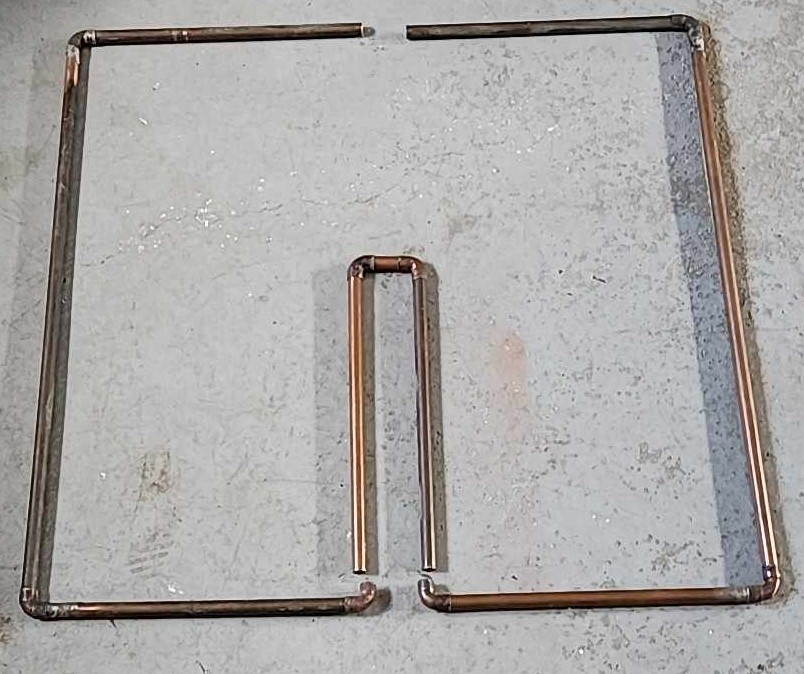
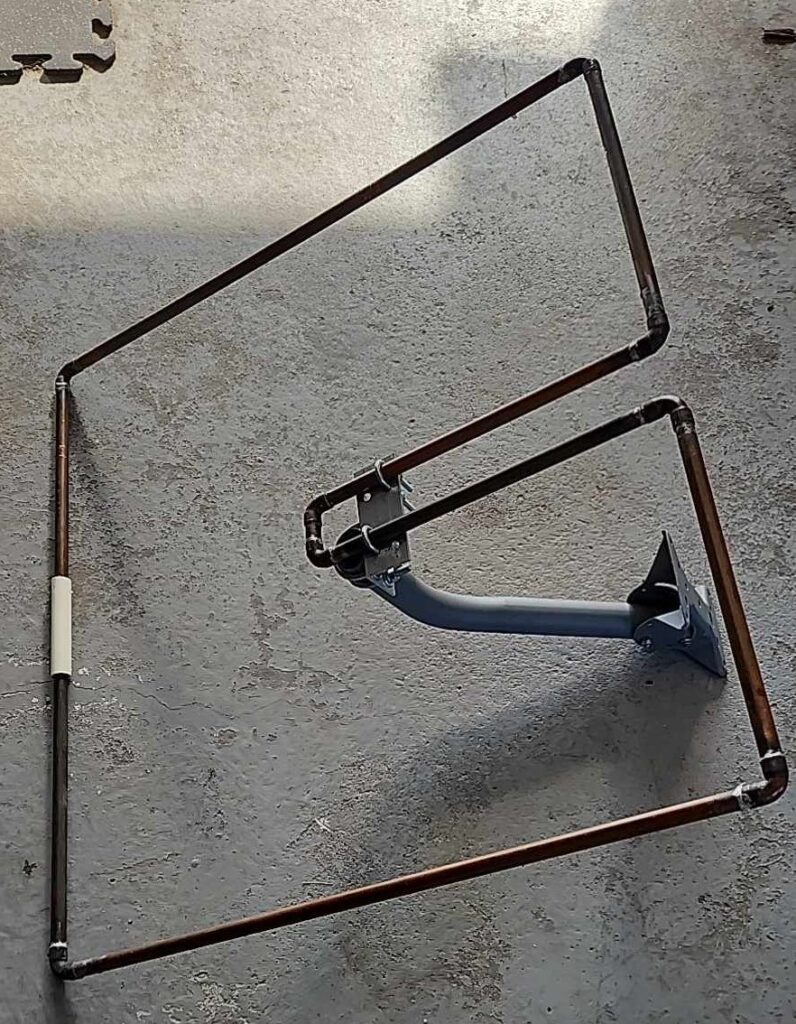
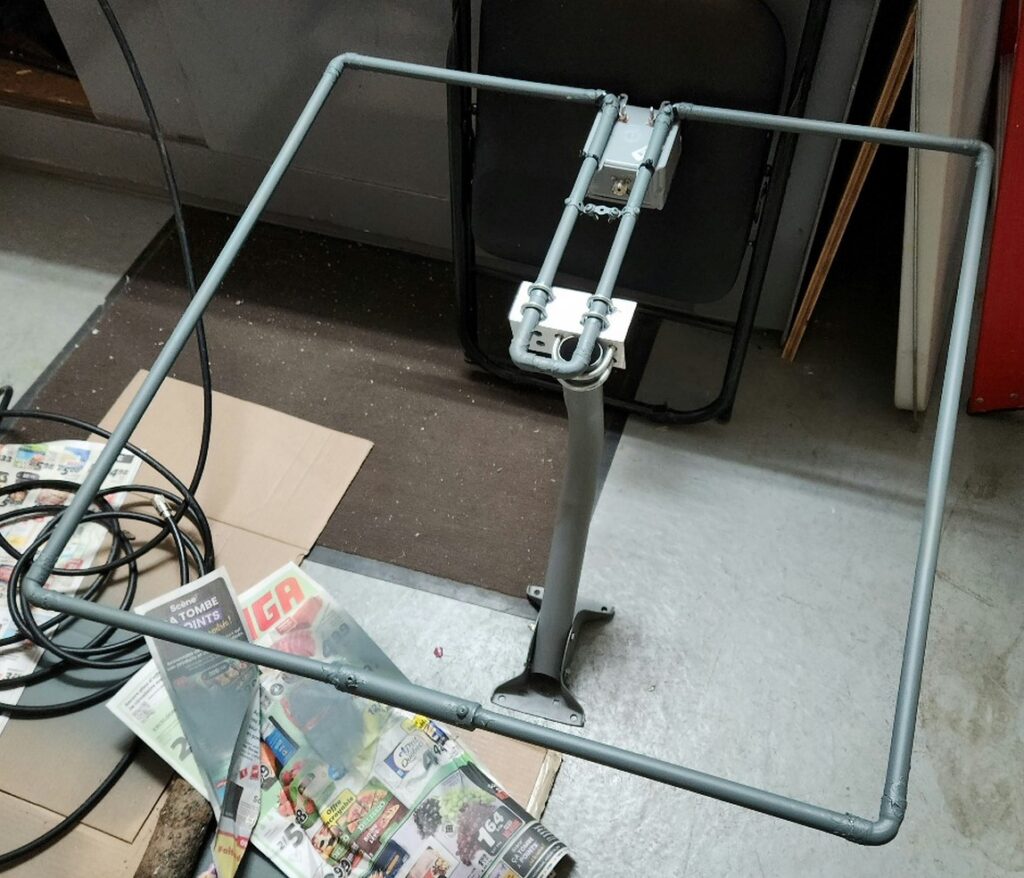
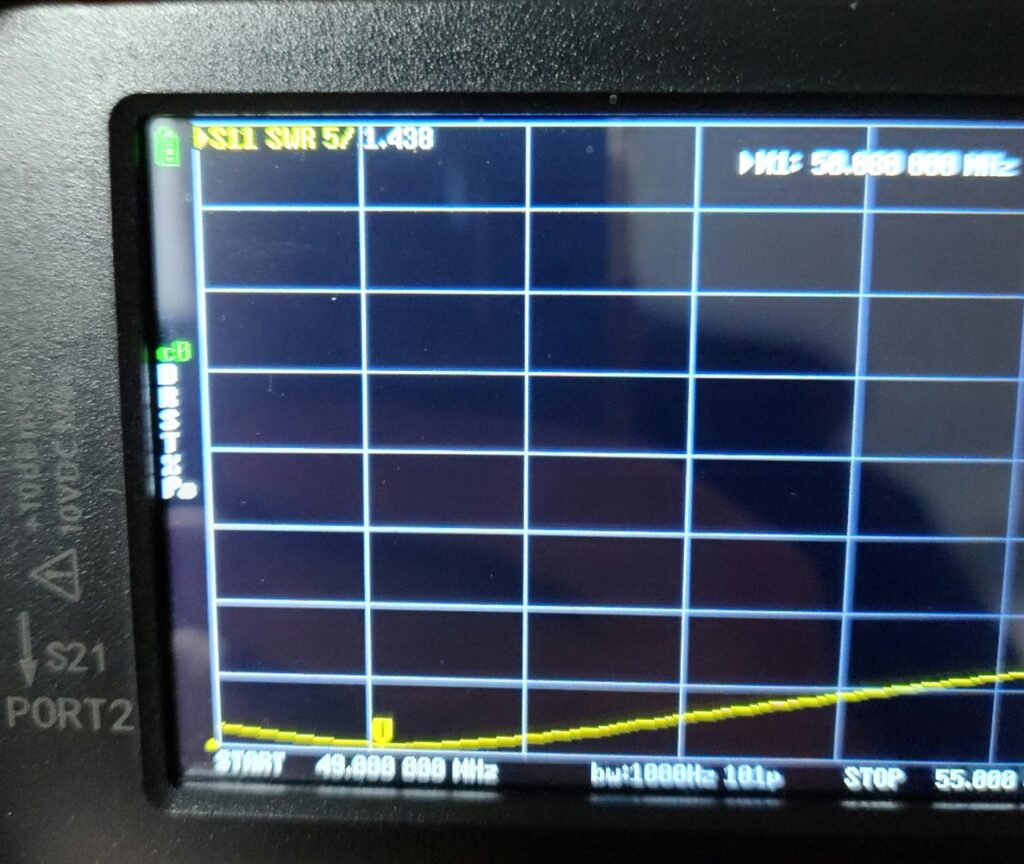
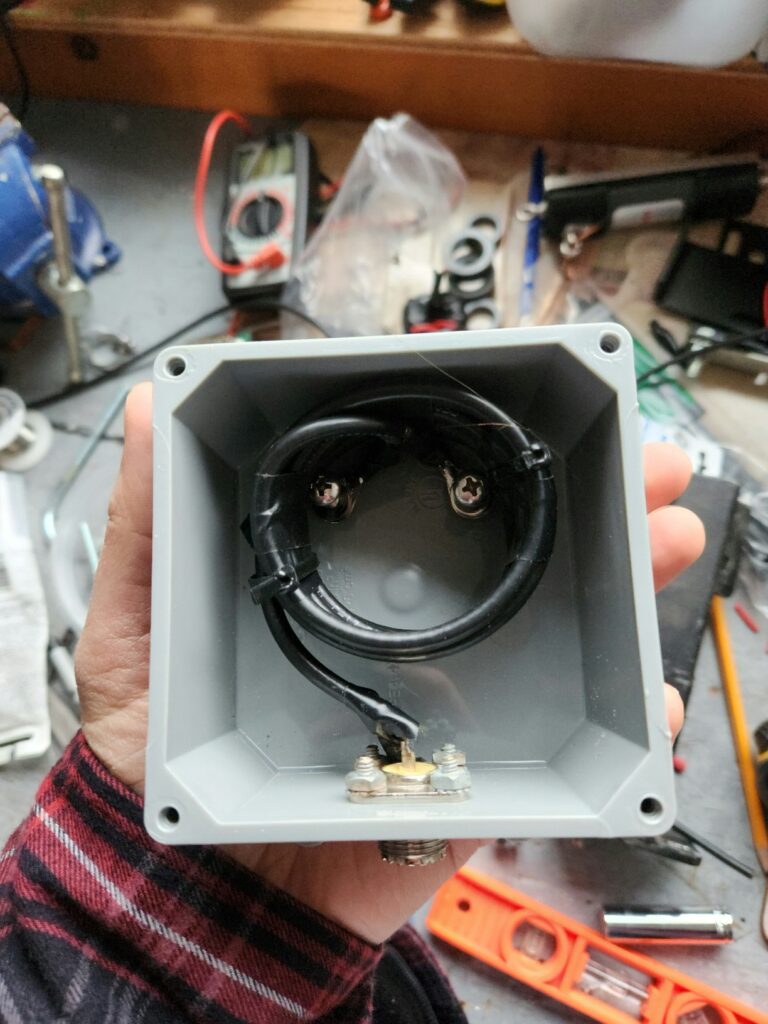
Tests with a NanoVNA (kindly lent to me by Mike VA3TEC) show that, after tweaking and playing around with the the strap and feedpoint, I get a pretty clear dip in SWR at 50.080 MHz, which is very close to the Pot Lid Net frequency of 50.090 MHz (let me take the opportunity to unashamedly invite you to join us every Sunday evening at 19h30 local time for some CW net fun!). I wish I could say that careful design and cutting on my part is what made this happen, but the reality is that I'm somewhat lazy when it comes to building things, and my usual approach of "good enough" and dumb luck, more than precise assembly of parts, is to thank. I mean, I was in the ballpark anyways, and I have a tuner. So… And this frequency will likely go up a little once the antenna is up high, far away from the ground.
As I write this, I wish I could tell you how well this worked, and how amazingly it outperforms my attic doublet and lets me work rare DX (in this case, Hugo VE3KTN). But the sad reality is that I haven't installed it on my roof yet. You see, height and I don't really agree, so I have to rely on my roofer brother-in-law to come and put it up for me. I don't know how he so nonchalantly walks up that ladder, vape in mouth, antenna in hand, without a care in the world. It's really a sight to behold. But with the weather, and a current bout of Covid at my home, I don't know yet when he'll find an hour to come and install it. But he promised he'll drop by soon. When he does I'll be sure to give you all an update on this square piece of copper tubing. Or, maybe you can come and hear it for yourself on the Pot Lid Net!
73, Ante VA2BBW
